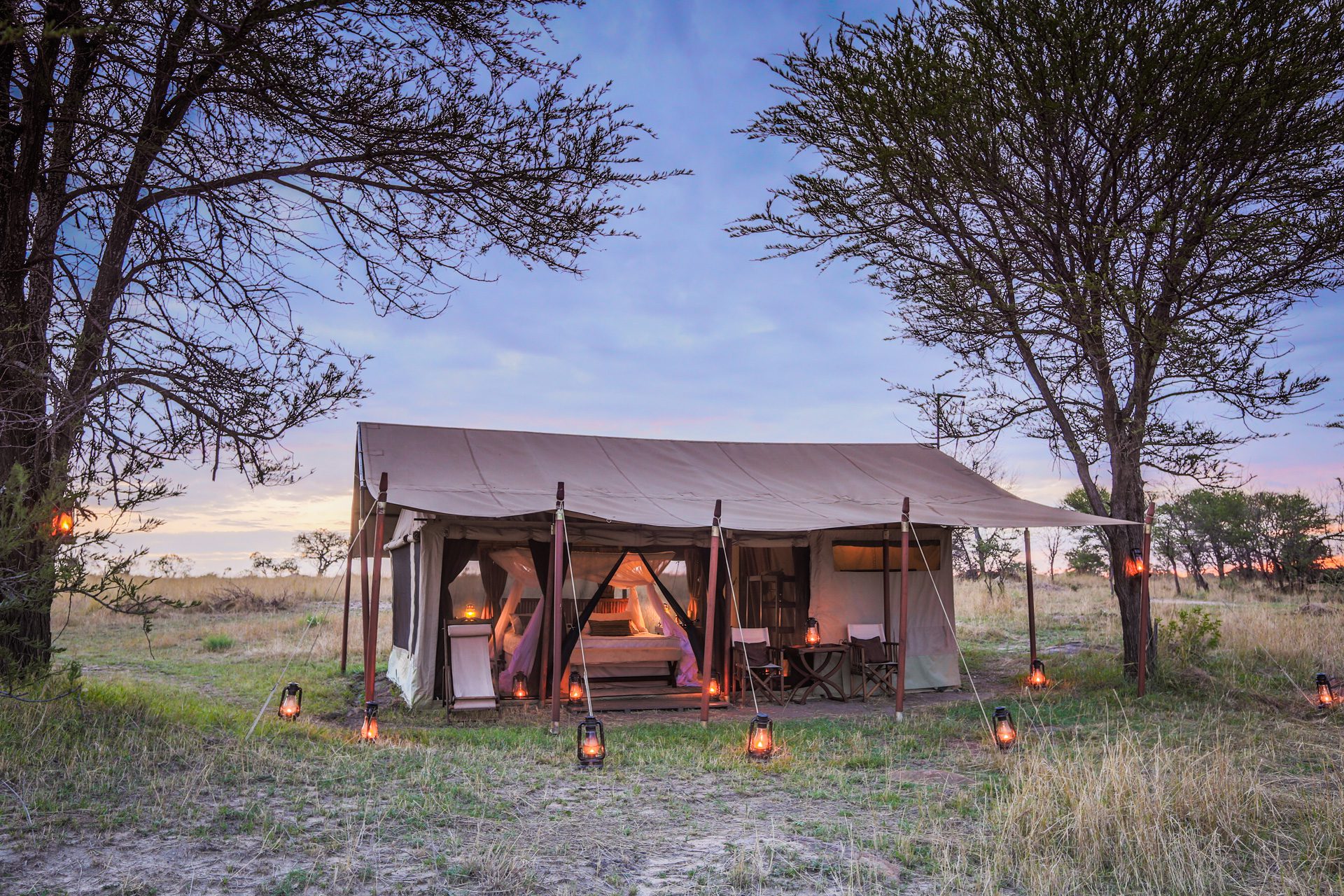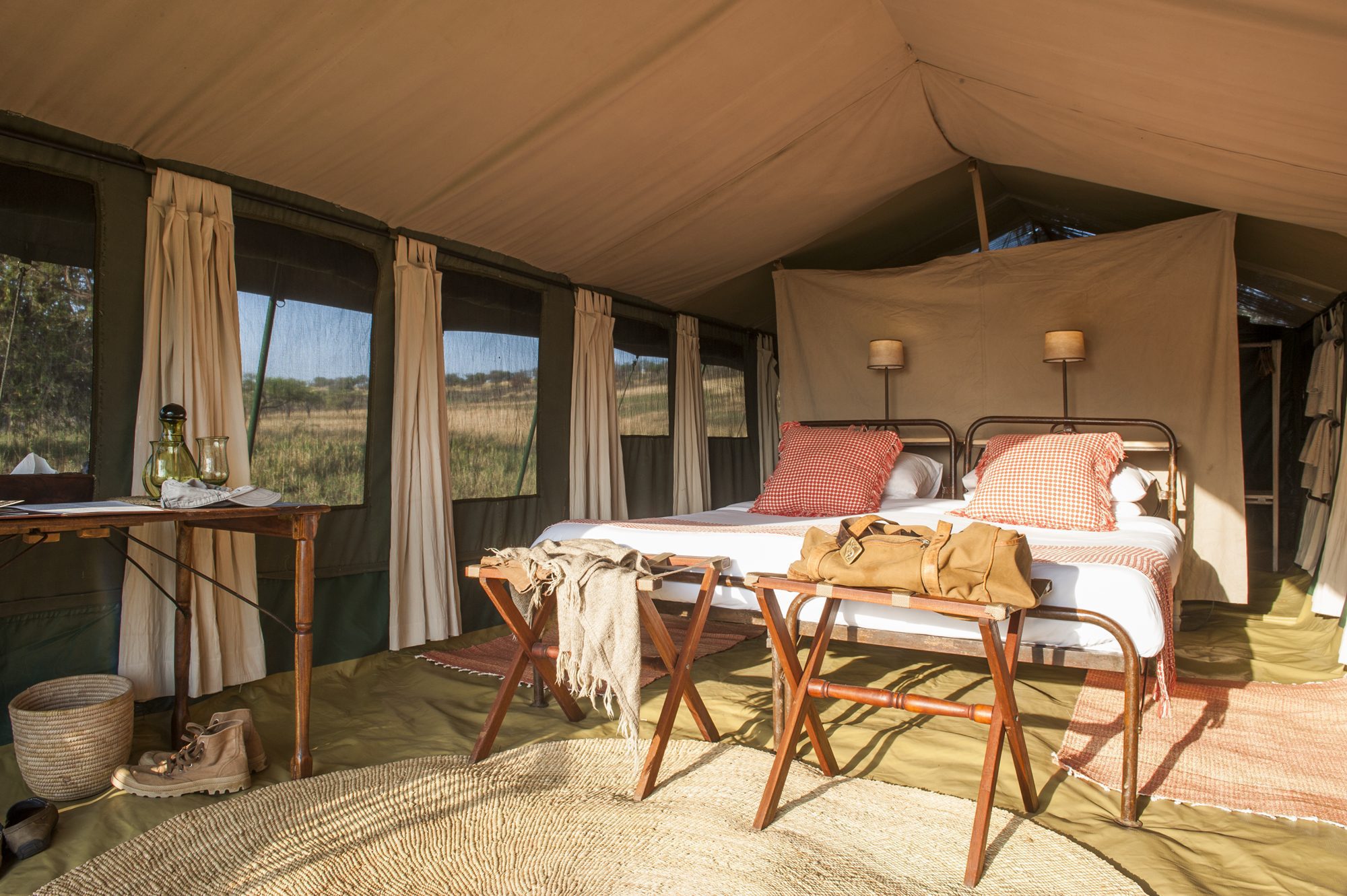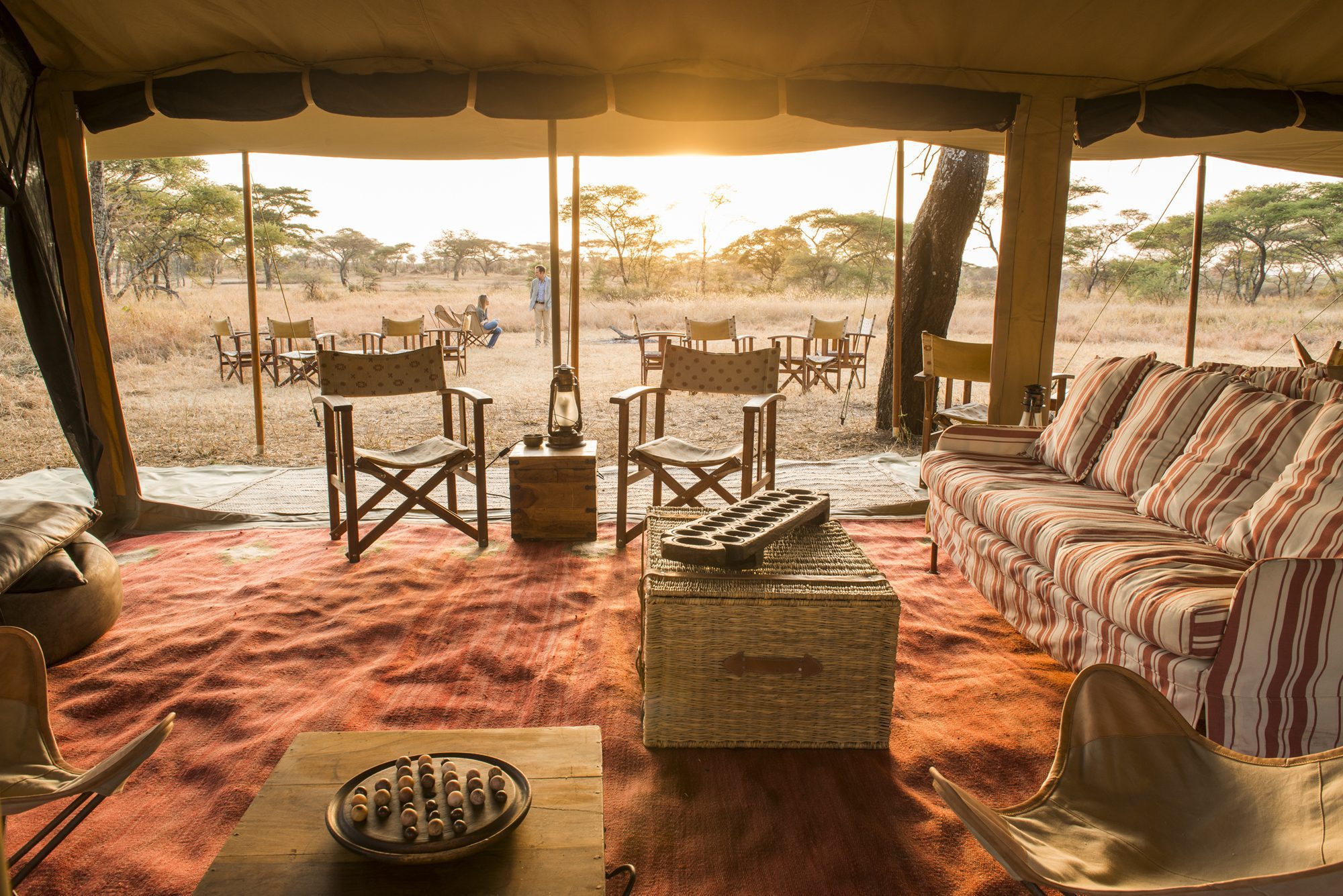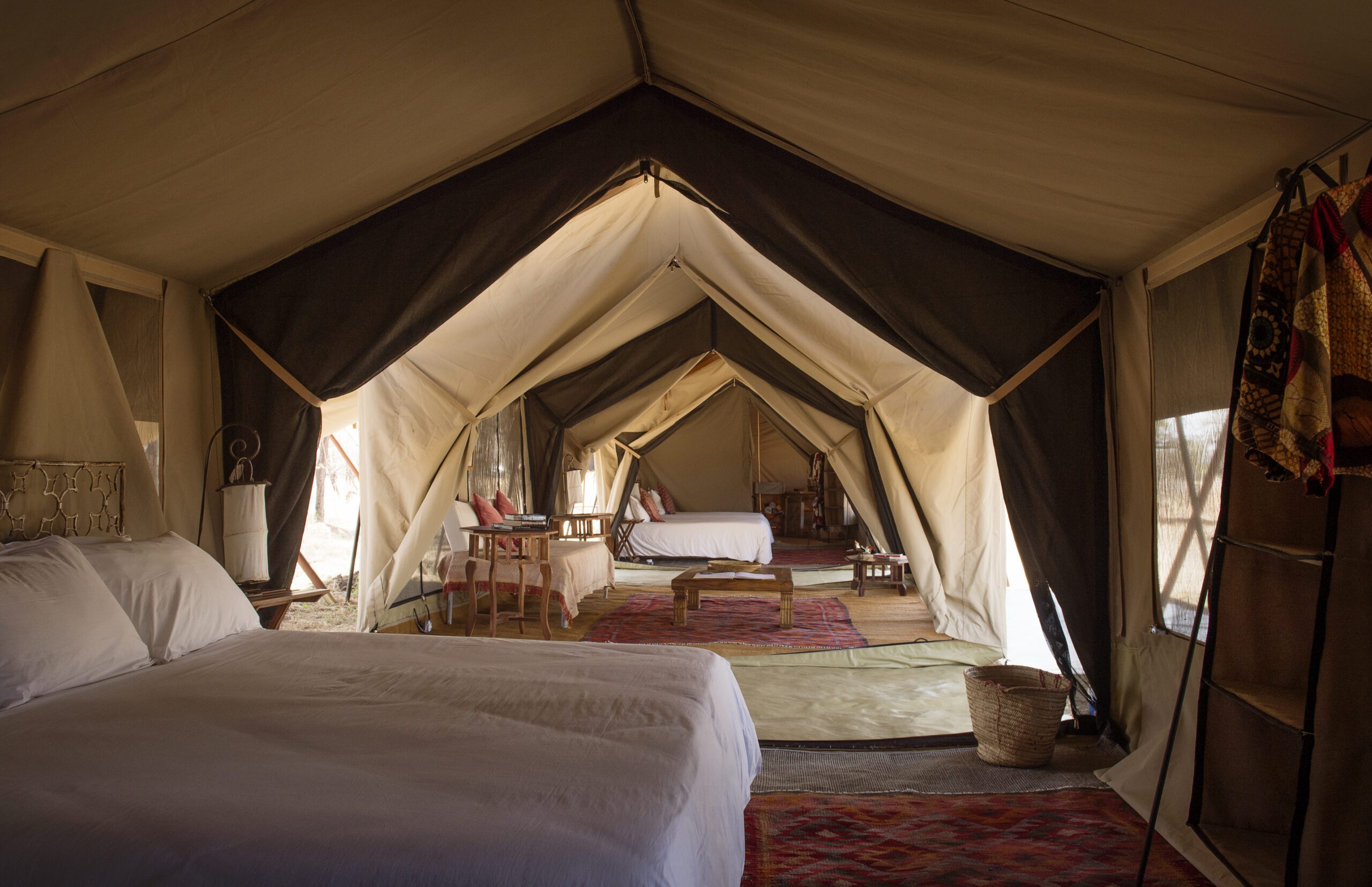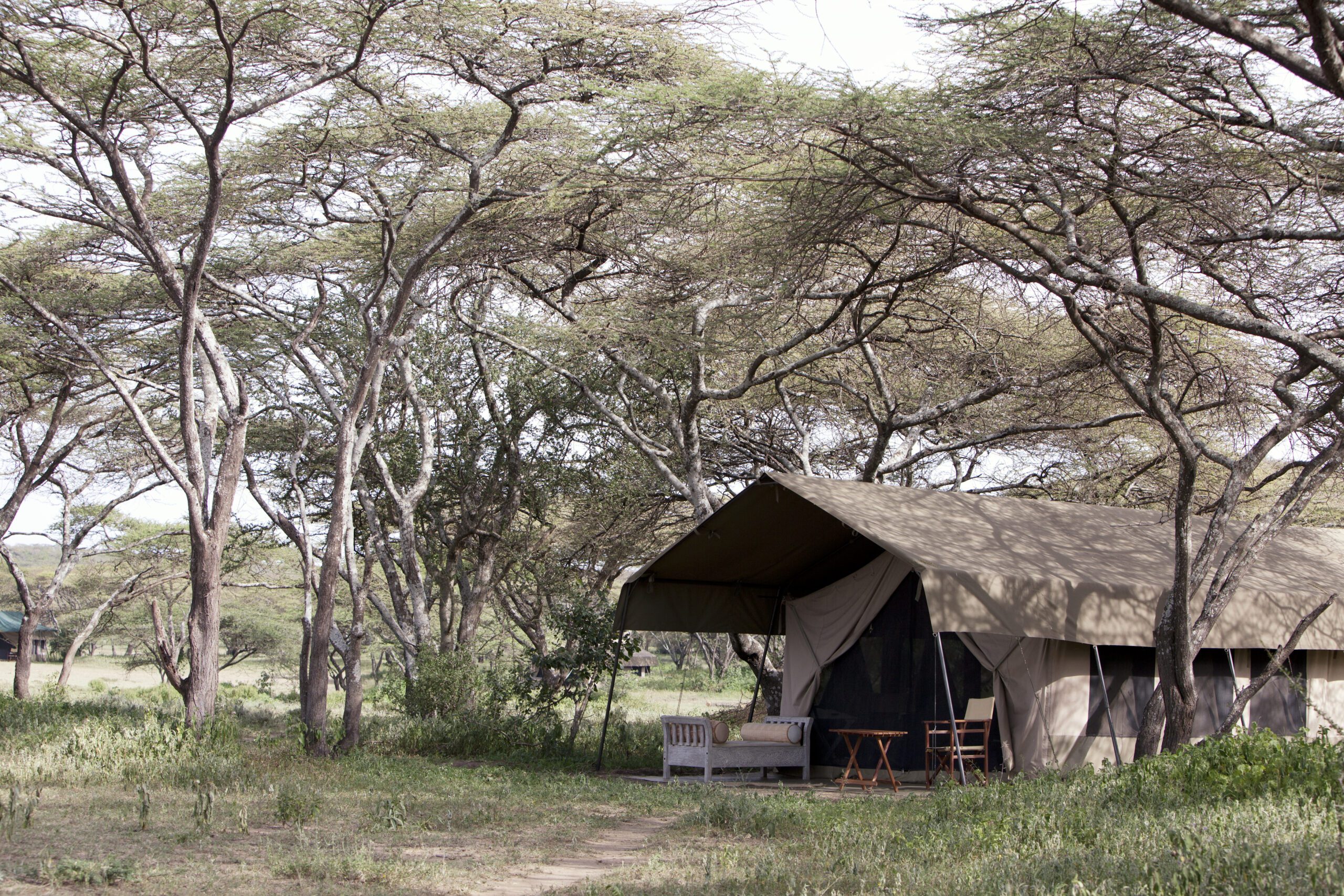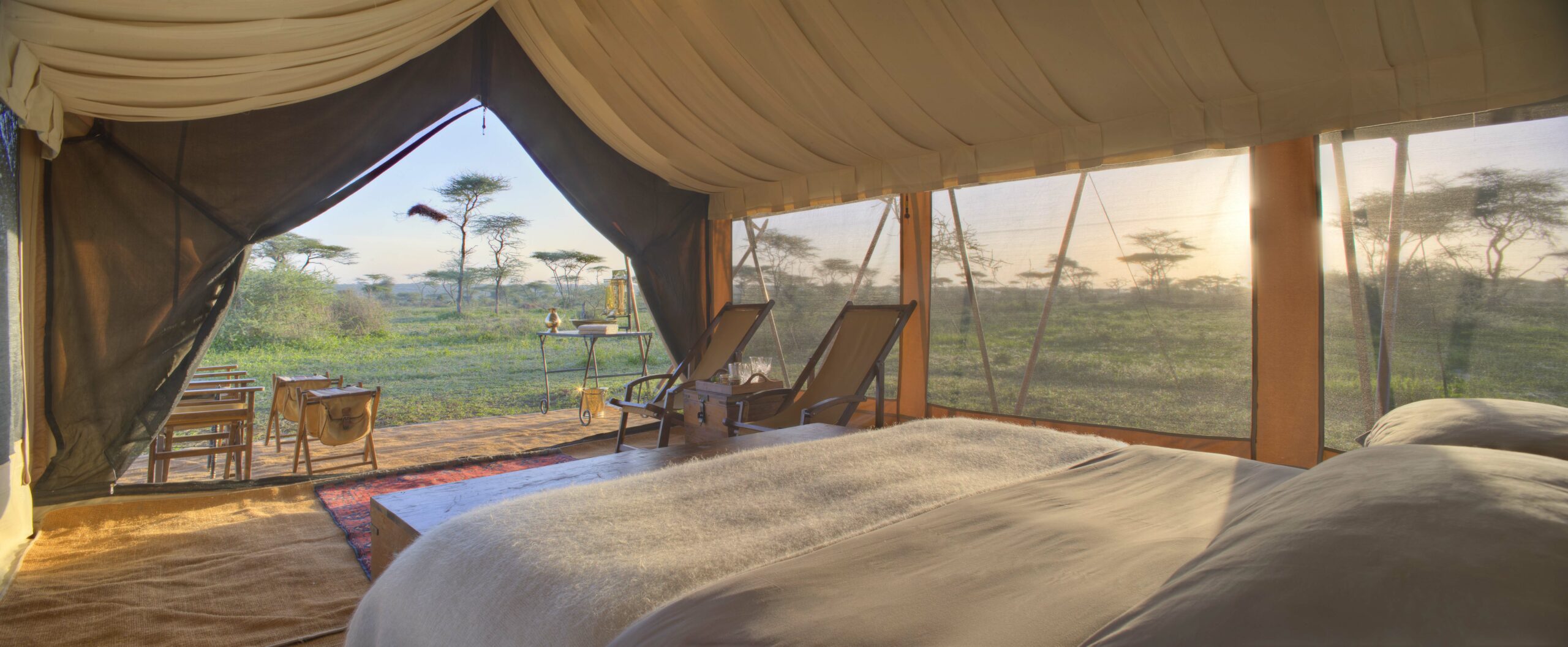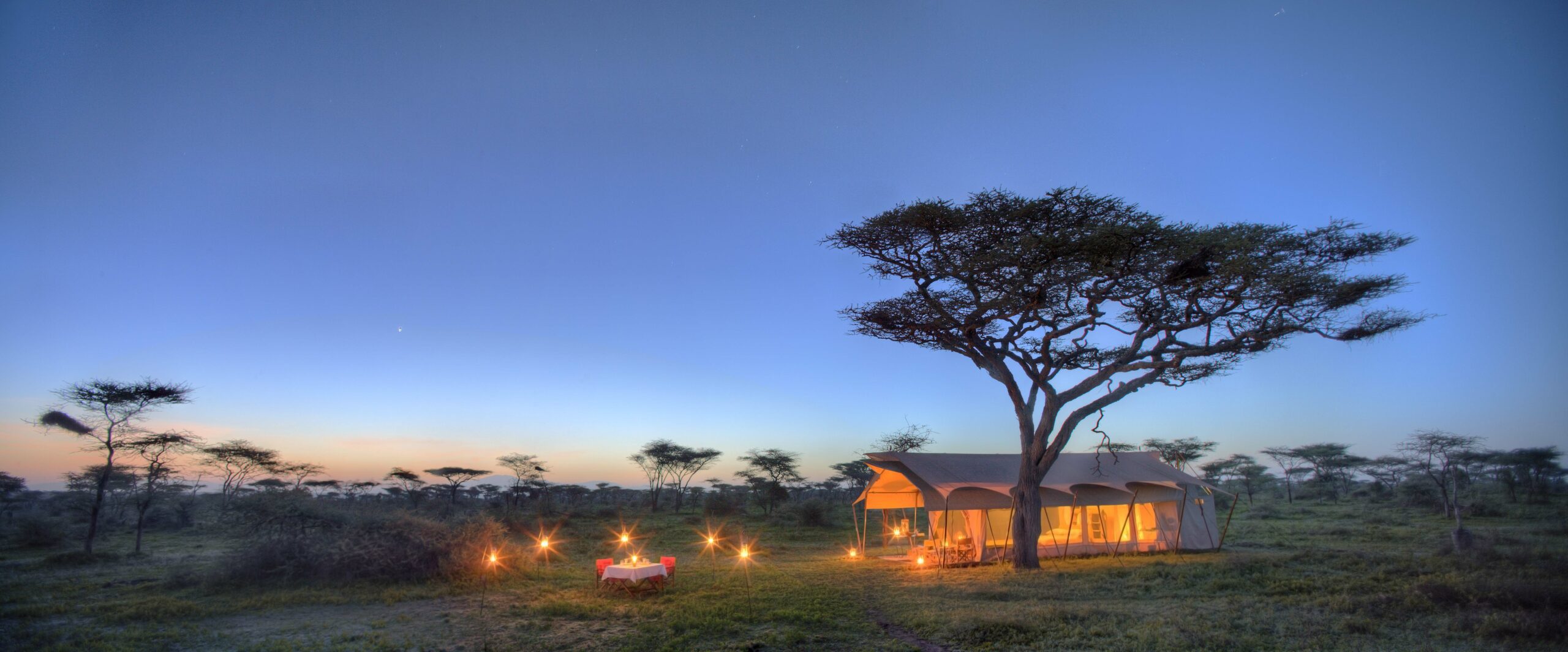Mobile camps tend to change locations every few months throughout the annual Great Wildebeest Migration to track the action, which is often unpredictable and weather-dependent. Staying somewhat nimble, which doesn’t always translate to “basic” as evidenced by these luxury camps below, is part of the charm and also what separates mobile from permanent camps. Learn more about their differences here.
With location at top of mind, mobile camps make sure all guests are always at the center of Africa’s most coveted wildlife watching spots. While seeing the migration is never a guarantee at any camp—mobile or permanent—the following four mobile camps (in no particular order) will do their best to get you in the right place at the right time. This is only a small sampling of your viewing options and accommodations in Tanzania. We have lots more recommendations that we love, and promise to work with you to find what best suits your travel needs.
Legendary Serengeti Mobile Camp
Vantage point: Since the wildebeests are always on the move, this mobile camp tracks their migratory patterns, setting up in three prime locations throughout the year: the west Serengeti from May to July, the north Serengeti from July to November, and the south Serengeti from December to April. Camp schedules are subject to change, which is a good thing for maximum game viewing.
Get cozy: Forget crowds. Each camp is divided in two with a maximum of six tents for extra intimacy and privacy. If you have a party of six or more, you can get a whole campsite to yourselves. Indoor showers, Wifi, and electricity only enhance the safari experience, complete with rugs and beds with fine linens. Legendary’s guides are superb. They go to great lengths to keep you in the heart of the action, and away from others.
Explore more: Each group gets their own private safari vehicle and local guide, which means the open dirt road is yours for the taking. With your own set of wheels, you decide when to go out and for how long. If chasing wildebeests is how you want to spend your entire adventure, then so be it!
Nomad’s Serengeti Safari Camp
Vantage point: With a name like Nomad’s, there’s no doubt this safari outfitter has a penchant for wandering. As one of the first mobile safari operations in northern Tanzania, it changes locations up to five times a year across the Serengeti, depending on where the wildebeest action is. So, you’re always within reach of taking memorable photos. This is another camp renowned for excellent guides.
Get cozy: Though they travel often and light that doesn’t mean they’re skimping on comfort. The camp features six tents, outfitted with soft and snuggly beds, a sink with big jugs of water (hot water is provided in the morning), plus an en-suite bucket shower and eco-flush toilet.
Explore more: When the camp is located in the west and north, between May and June, combine a morning game drive with a full-day visit to the local school and clinic supported by Nomad. Just a three hour’s drive from Serengeti, the school offers refuge for young girls fleeing from female genital mutilation. They’ll openly talk to you about their experiences; it’s great therapy for them. If you can set aside space in your suitcase to bring them items from home, they are always in need of girls clothes, shoes, bedsheets, sanitary pads and underwear.
Serian’s Serengeti South
Vantage point: From mid-December through to May, this mobile safari brings you to prime spots to capture the wildebeest birthing season. Taking place in the southernmost part of the Serengeti plains in the Ngorogoro Conservation Area, thousands of wildebeests—along with some gnus and zebras—give birth to a new generation amidst the acacia trees. This landscape of short, young grass makes it easier to see newborn calves, unfortunately, not only for you, but also for the lurking cheetahs, ready to grab a quick bite. If you choose to visit between June and mid-November, this camp moves to Serian’s Serengeti North, where it’s set about a mile from the Mara River in Kenya, where you might catch migration crossings.
Get cozy: Step back in time with this classic, six-tent, colonial luxury-style camp, with some upgrades in modern amenities, including electricity, flush toilets and generous bucket showers. There’s also a “bush bath” for a relaxing outdoor soak, best done when you’re facing the blazing sunset. Every tent comes with its own outstanding private guide and vehicle, so your days are spent doing exactly what what interests you.
Explore more: If you need a break from the miracle of life (AKA, birth), you can head south to Lake Eyasi to learn and experience life with its inhabitants, the ethnic groups of the Hazabe and Ndorobo people. No need to rush back to camp: You can crash here for the night, under the stars at Lake Eyasi.
&Beyond Serengeti Under Canvas
Vantage point: Pitching just nine luxury tents in both the northern and southern regions of the Serengeti grasslands, this semi-permanent camp roams where the wildebeests do. Anticipating their next move, safari game drives follow the animals as they cross the Mara and Grumeti Rivers in the north, or give birth to calves in the Ndutu region in the south within the Ngorogoro Conservation Area.
Get cozy: Under the canvas ceilings of these spacious luxury tents are chic rugs, plush beds, chandeliers, fine silverware, and even private butler service, so you don’t need to get off the sofa for your nightcap.
Explore more: When the camp is situated in the Grumeti region in June, you can take a 20-minute drive to Lake Victoria, the largest freshwater lake in Africa and main reservoir of the Nile. There, you can set off on a fishing safari or meet with a local traditional doctor to learn more about their healing practices. Then enjoy a picnic lunch on the lake shore while admiring the magnificent landscapes.
Plan Your Trip
Call or email us to learn more about each of these safari camps and others!
RELATED: The Great Wildebeest Migration: 3 Tips to Know Before You Go
